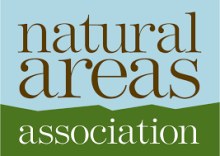Resource information
The Florida Scrub ecosystem depends on fire to sustain ecosystem function and to support resident plant and animal species. A recent study addressed the relationship between the time since last fire (TSF) and resident amphibians and reptiles in rosemary bald, one Florida Scrub habitat type. This is a parallel study in another Florida Scrub habitat type, scrubby flatwoods, at Archbold Biological Station (ABS), Lake Placid, Florida, USA. We installed 36 400-m² enclosures (four burn units within each of three TSF categories X 3 replicates per burn unit) at ABS. Bucket trap sampling, within and outside the enclosures, occurred during the spring and late summer in 2007 and 2008. Ten environmental variables that reflect differences in the biotic and abiotic conditions of the microhabitats associated with different TSF were surveyed. Eleven species of reptiles and six species of amphibians were captured. Three lizard species together accounted for > 95% of the reptile captures, and two toad species together accounted for > 96% of the amphibian captures. Abundance of the Florida Sand Skink (Plestiodon reynoldsi Stejneger) was highest in long-unburned areas, probably because of the accumulated litter; but abundances of the other two lizard species did not show a relationship with TSF. Differences in relative abundances of species between sampling years may be a function of the difference in rainfall. Despite substantial variation in sampling methods between this study and the previous one, the herpetofaunal composition of the two habitat types were found to be similar; differences in diversity between them was attributable mostly to differences in relative abundances. Species inhabiting the Florida Scrub ecosystem respond differently to TSF: the federally-listed Florida Scrub Jay (Aphelocoma coerulescens Bosc), for example, requires more frequent burning than appears to be the case for the Florida Sand Skink. A land management plan of stochastic return intervals and spatial variation of high-intensity fires to maintain a mosaic landscape would be ideal; but management options for maintaining the diversity of all species inhabiting the Florida scrub ecosystem are limited, because of the generally small size of remaining habitat patches.



